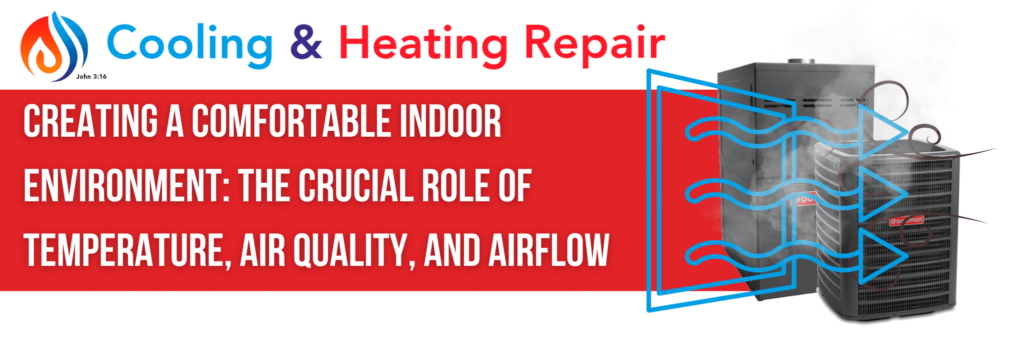Creating a Comfortable Indoor Environment: The Crucial Role of Temperature, Air Quality, and Airflow

In the quest for optimal comfort within indoor spaces, a delicate balance of factors comes into play. This article delves into the pivotal role that temperature, air quality, and airflow collectively play in crafting an environment where occupants can thrive. Let’s explore how each element contributes to the overall comfort experience.
- Temperature Harmony: Achieving the perfect temperature is a cornerstone of comfort. HVAC systems are designed to regulate indoor temperatures, ensuring they remain within a comfortable range. From warm winter evenings to cool summer afternoons, maintaining an ideal temperature promotes a pleasant and inviting atmosphere.
- Air Quality Assurance: Good air quality is a non-negotiable aspect of a comfortable indoor environment. HVAC systems, equipped with air filters and purifiers, work tirelessly to eliminate pollutants, allergens, and contaminants from the air. This not only enhances comfort but also supports better respiratory health for occupants.
- Airflow Dynamics: The way air circulates within a space significantly impacts comfort. Adequate airflow prevents stagnation, distributing temperature-controlled air evenly throughout the room. Proper ventilation ensures a continuous supply of fresh air, contributing to a more invigorating and comfortable atmosphere.
Why It Matters:
- Productivity Boost: A comfortable environment fosters increased productivity and focus among occupants.
- Health and Well-being: Optimal temperature, air quality, and airflow contribute to better physical and mental well-being.
- Energy Efficiency: Efficient HVAC systems that regulate these factors also contribute to energy savings.
Tips for Improving Comfort:
- Regular HVAC Maintenance: Ensure your HVAC system is well-maintained for optimal performance.
- Smart Temperature Control: Invest in smart thermostats for precise temperature regulation.
- Air Quality Monitoring: Implement air quality sensors to monitor and maintain high indoor air quality.
- Adequate Ventilation: Ensure proper ventilation to facilitate the continuous exchange of indoor and outdoor air.
Crafting a comfortable indoor environment is a multifaceted endeavor, with temperature, air quality, and airflow serving as the pillars of success. By understanding and optimizing these elements, businesses and homeowners alike can create spaces where occupants feel not just comfortable but truly at their best. Prioritizing these factors not only enhances daily life but also contributes to overall well-being and satisfaction.


